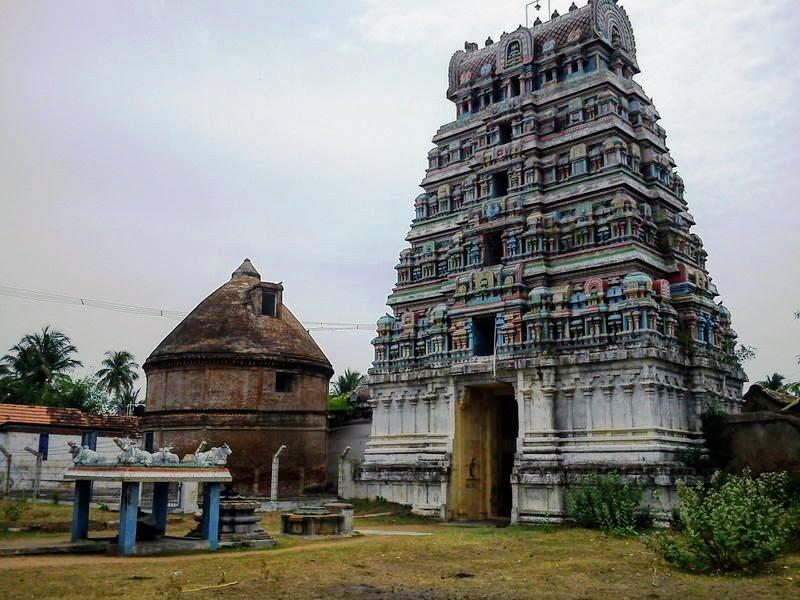In Darukavanam, some wicked sages performed a Yagna using evil mantras targeting Lord Shiva, creating a ferocious tiger to kill him. Lord Shiva subdued the tiger, killed it, and used its skin as his attire. This event took place at this location, which is known by several names such as Brahmmavanam, Palaivanam, Arasavanam, and Punnahavanam. This temple is one of the Saptha Sthanam (seven sacred places) around Tirunallur.
During the Pandavas' exile, following the advice of Sage Dhaumya, Arjuna came to this temple, worshipped Lord Shiva, and learned all the advanced techniques of archery. He also descended to the netherworld, where he married Uloopi.
Lord Sri Rama worshipped Lord Shiva here to cleanse himself of the sin of killing Ravana. Since his sins were absolved, the place came to be known as Papanasam (where "Papa" means sin, and "Nasam" means to clear).
The temple also houses many Shivalingas, placed serially in the Mandap, each installed on Avudayars, the platforms on which Shiva Lingas are set.
Puranic Significance :
The original structure of the Palaivananathar Temple is believed to have been constructed by the Cholas, while the present masonry structure was built by the Vijayanagar kings during the 16th century. Today, the temple is maintained and administered by the Hindu Religious and Charitable Endowments Department of the Government of Tamil Nadu.
According to Hindu legend, Lord Shiva killed a tiger in the forest of Darukavana and wore its skin as a symbol of his victory. Later, during the Mahabharata era, Arjuna, the Pandava prince who was in exile with his brothers, was advised by Sage Dhaumya to visit this forest and seek Lord Shiva's blessings. Arjuna did so, and as a result, he received special skills and divine weapons in archery from Lord Shiva.
The presiding deity, Papanasanathar, is believed to have absolved the sins of many other deities, including Vishnu, Brahma, Rama, Sita, Sage Vashishta, Lakshmana, and other celestial beings. This is how the deity earned the name Papanasanathar, meaning "the one who absolves sins."
Administration History :
The Palaivananathar Temple has been under the care of several dynasties, starting with the Cholas, who originally built and expanded the temple. Inscriptions from Pallava and Vijayanagara periods also indicate contributions towards its development. During the Vijayanagara Empire, further structural improvements were made, including the granary. In modern times, the temple is maintained by the Hindu Religious and Charitable Endowments Department of the Government of Tamil Nadu. The State Archaeological Department is also involved in preserving its historical monuments.
